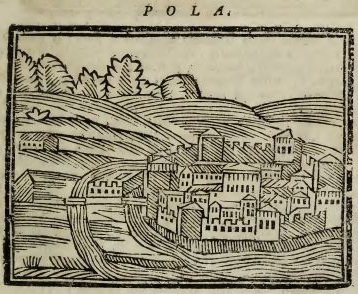New IDS Leadership Launches Disciplinary Action Against Ex-leader
ZAGREB, 5 Feb 2022 - The presidency of the Istria Democratic Party (IDS) has launched disciplinary action against its former leader, Istria County Prefect Boris Miletić, for violating the party's code of ethics and statute.
In a statement from its meeting in Pula on Friday night, the new IDS leadership said that Miletić had taken some decisions "in an autocratic manner, without dialogue and without the knowledge and consent of the party's governing bodies."
The presidency discussed Miletić's responsibility for the result of the May 2021 local election, in which the IDS lost the confidence of a portion of its voters. It said that "no individual, no matter how deserving they may be, can come before the interests of Istrians and the IDS."
Miletić later said that he regretted s to see what was going on in his own party. "I am proud of everything that we have done in all these years and I will always be," he said and added: " I will never give in under pressure from individuals and different interests to the detriment of Istrians."
"The next move is mine," Miletić said..
Unofficially, 15 members of the IDS presidency voted in favour of disciplinary action and one abstained from the vote.
Conflict of Interest Commission Looking Into Parliament Speaker Jandroković
ZAGREB, 5 Feb 2022 - The chair of the Conflict of Interest Commission, Nataša Novaković, said on Friday they were looking into media reports concerning Parliament Speaker Gordan Jandroković.
"The Commission is investigating facts concerning Mr Jandroković, and that's all I can say. I can't go into details. We are focusing on everything that has been published in the media, the relevance and truthfulness of those reports," Novaković told Nova TV.
The Commission is investigating the link between Jandroković and businessman Vedran Gajski. Jandroković has confirmed that Gajski contacted him because he was paying rent to the Državne Nekretnine state property management company for business premises that were not connected to the power grid and that Gajski then contacted the then state secretary in charge of state property, Krunoslav Katičić, and informed him of the problem.
Novaković said that the Commission is also gathering facts regarding the case of the prime minister's chief of staff Zvonimir Frka Petešić, after which they will decide on further steps.
The Commission is also looking into the case of Defence Minister Mario Banožić.
Nova TV said that Vanja Bilić, former assistant justice minister in the government of Zoran Milanović, had used a state-owned apartment even though he had a permanent address in Zagreb at the time.
2nd EasyJet Rijeka Line Added Connecting Kvarner and Berlin this Summer
February 5, 2022 - The latest flight news to Croatia as the second EasyJet Rijeka line has been announced, connecting Kvarner and Berlin this summer.
After announcing its return to Rijeka after 15 years and establishing a regular line between London (Gatwick) and Rijeka, EasyJet now offers a second line from Rijeka Airport - a seasonal line to Berlin!
Namely, Croatian Aviation reports that from June 28 this year, EasyJet will introduce a direct line between Rijeka and Berlin, which will operate twice a week, every Tuesday and Saturday, departing from Rijeka to the German capital in the evening.
Airbus A320 aircraft have been announced on this route, which has a capacity of up to 180 passengers. Unlike the route to London announced until the end of the summer flight schedule, the Berlin line should be in service until September 3, 2022.
Eurowings thus gains competition considering that it already operates in the season between Berlin and Rijeka. This line is also chosen by many Zagreb passengers who do not have a direct flight from Zagreb to Berlin.
Recall, after fifteen years of absence, EasyJet confirmed earlier this week that it would operate with two weekly flights on Tuesdays and Saturdays between May and October 2022. Rijeka airport welcomed the news after announcing the return of Ryanair, Condor Airlines, and AirSerbia.
As EasyJet returns to Rijeka airport, the city expects the recovery of international traffic in the region and a record number of passengers arriving between May and October this year.
After many years of negotiations between Rijeka Airport and EasyJet, a consensus was reached. Furthermore, in talks with representatives of the relevant ministry, county, local units, hotels, and tourist boards, support and guarantees for promotional activities in the region were provided.
These activities are necessary to position Kvarner in the British market better, so it is planned to encourage and increase the number of arrivals from that market, which now accounts for less than 1 percent of overnight stays in Kvarner, said Rijeka Airport.
The city of Rijeka considers it necessary to reinforce its tourist offer and strategy to attract international guests after the pandemic that affected the development of the activities planned for Rijeka 2020: European Capital of Culture and the traditional carnival of the city canceled in both 2021 and 2022.
For more on flights to Croatia and other travel announcements, make sure to check out our dedicated travel section.
8th Slavonski Brod Open Curling Championship held at Fortress for First Time
February 5, 2022 - A mighty crowd of Croatian curlers gathered again for Box of Čvarci, the 8th Slavonski Brod Open Curling Championship.
One of the oldest in Croatia, the Curling club Legija from Slavonski Brod organized the Croatian curling tournament Box of Čvarci (Kutija čvaraka) - Slavonski Brod Open Curling Championship on Saturday, January 29, 2022, at the Brod Fortress ice skating rink, writes Ribafish.
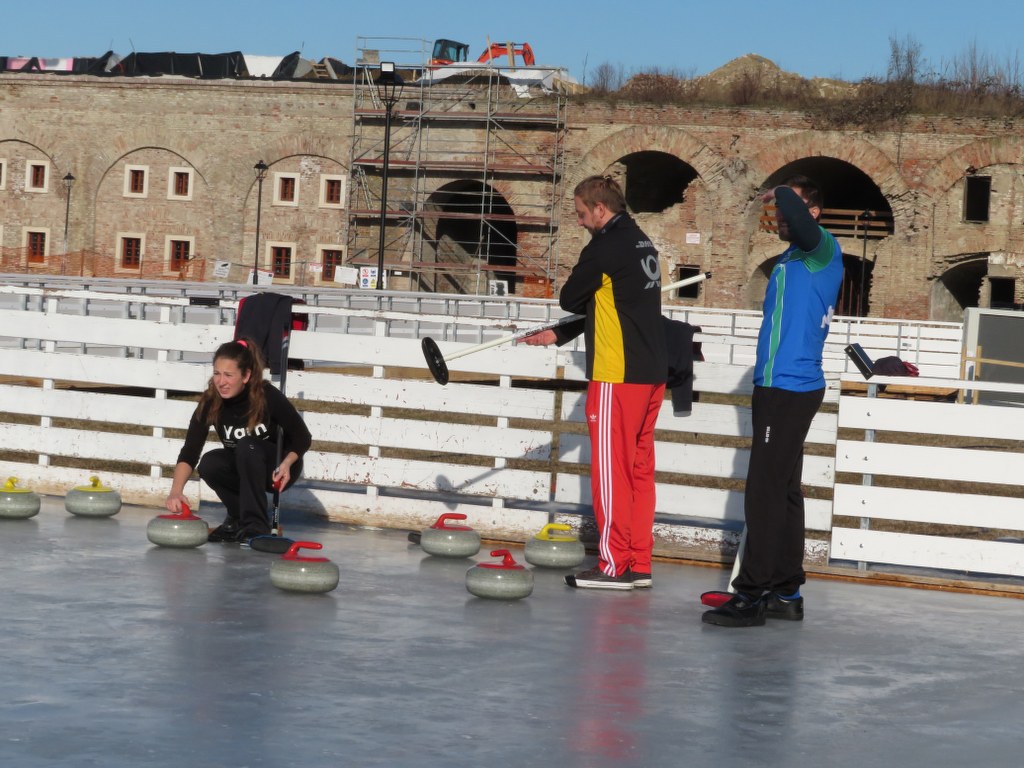
The last time this competition was held was in 2015. Now, after the rink was removed from the city center, the tournament has returned close to where the first seven tournaments took place and was held at the incredible Fortress for the first time.
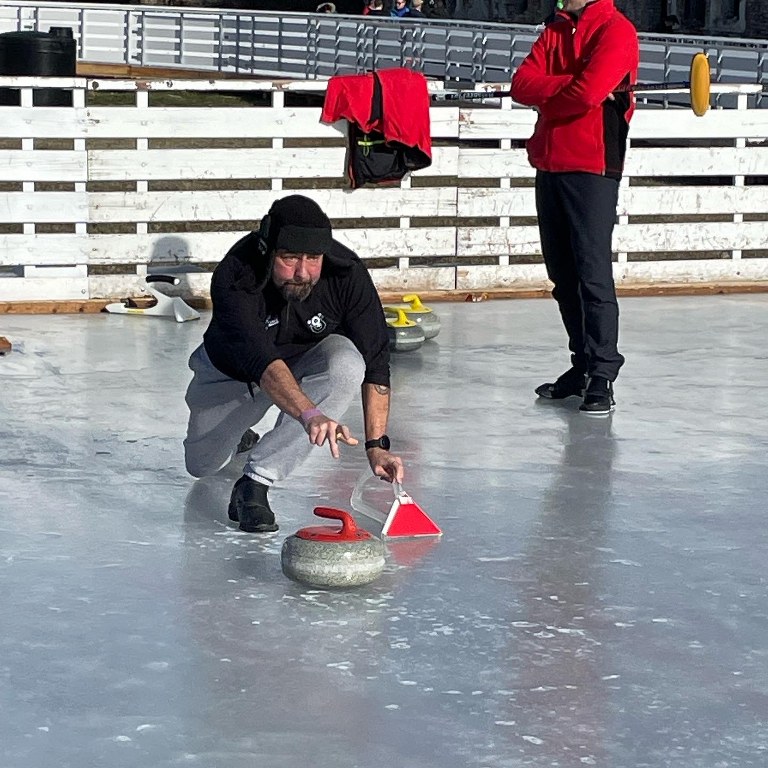
It all started back in 2003 when Legija was founded in Slavonski Brod, and in 2009, the Slavonski Brod Curling Championship was held for the first time at the City Skating Rink in Klasije. Knowing well the appetites of the curlers, from the first day, it was better known as 'Box of Čvarci (Cracklings)' or 'Kutija čvaraka.'

After Legija came to life, CK Zagreb and CK Vis were founded, and CK Čudnovati čunjaš was born. They soon made a statute and played.
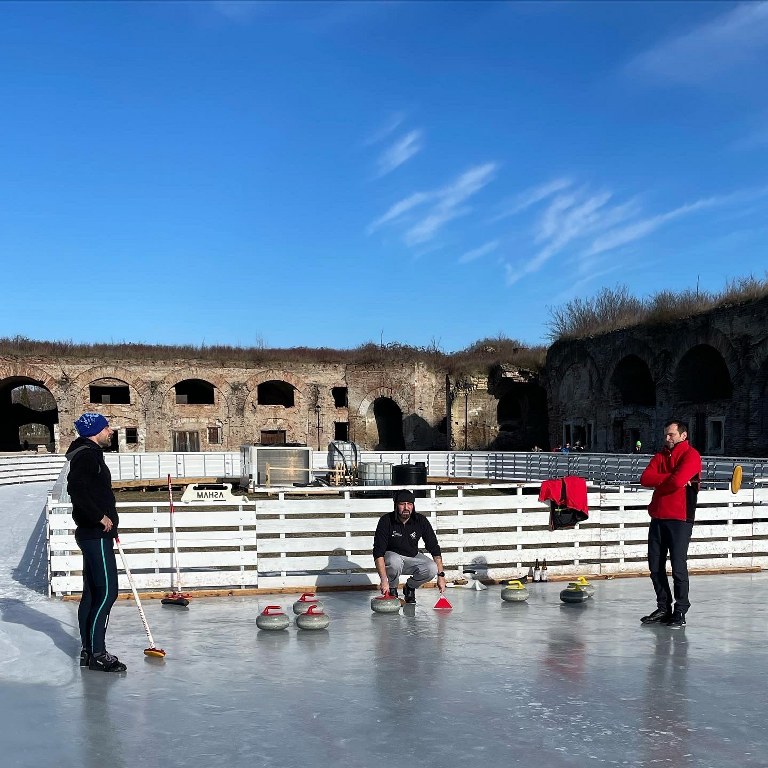
They first came to the Zagreb Fair for training and later to the first Croatian championship in Budapest, and history was written.

In the golden age of Croatian curling, there were over fifty players in both competitions. However, the best part was the atmosphere - happy people who love sports and entertainment, a series of serious games, and much more laughter and joy.
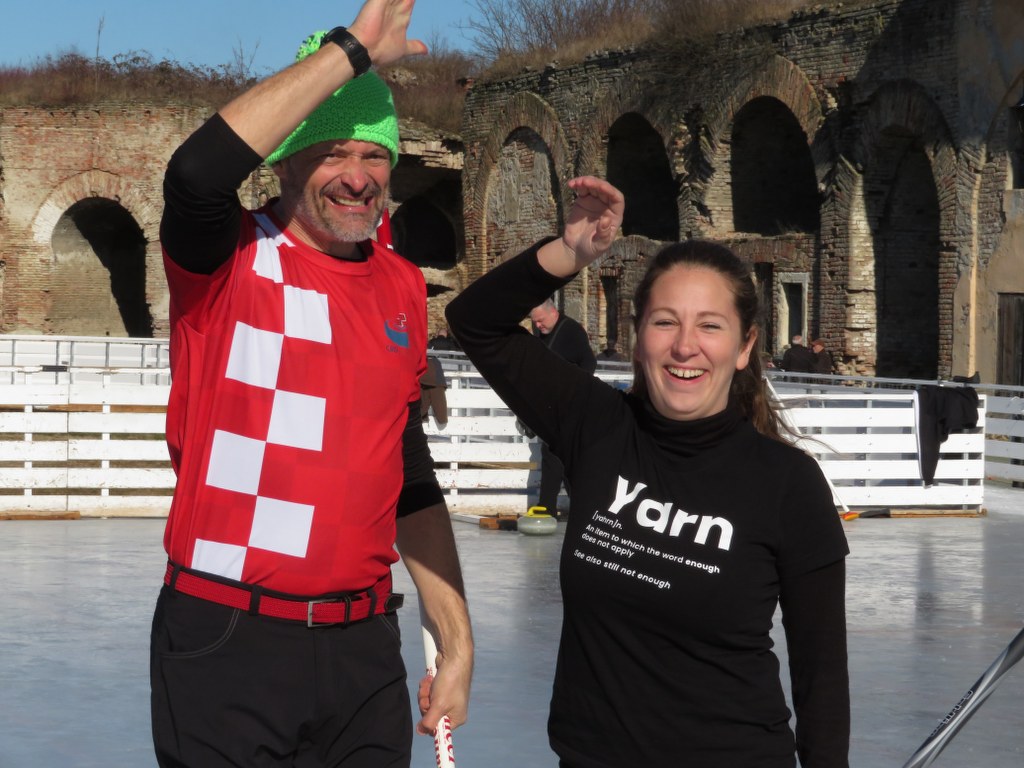

The clubs quickly realized that they would hardly have the best conditions. Thus, the first tournament was not held on ideal flat-ice conditions. Nevertheless, curling club Legija was named the winner.
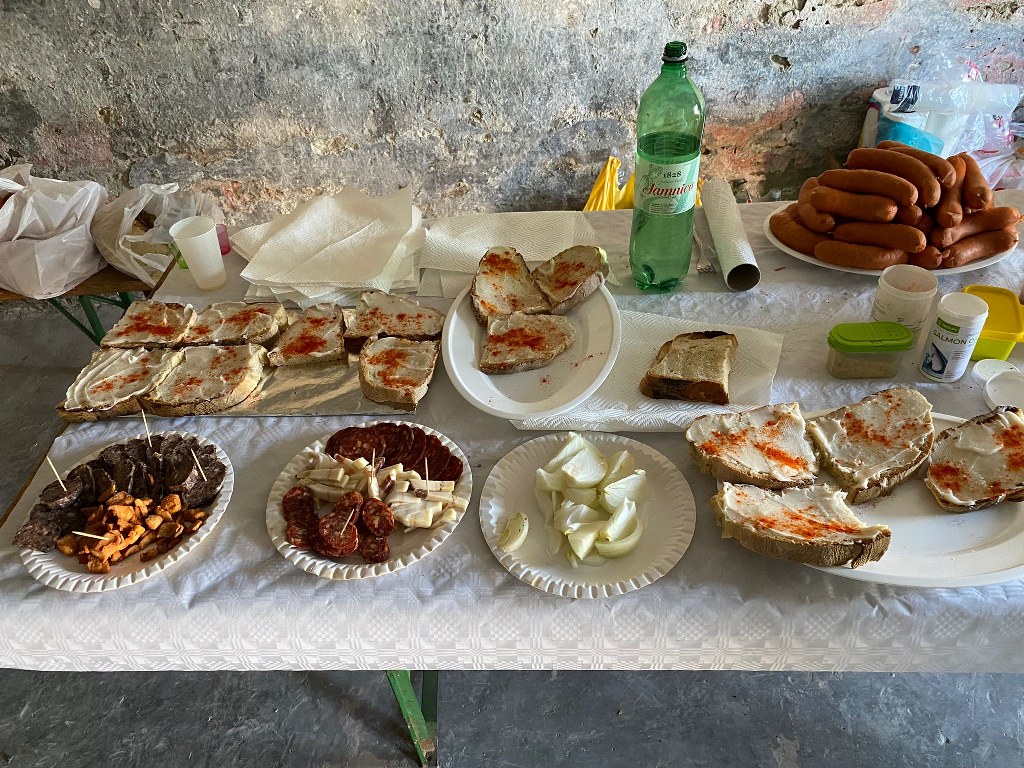
"Of course, we celebrated it worthy of winning the Champions League and promised that Brod is ours whenever the opportunity arises. And it was always wonderful, in the snow, rain, cold, heat, just like this Saturday in the beautiful sun and a good 15 degrees," commented RibaFish.

"As much as the heat pleased us, she made a minesweeper board out of ice, making it challenging for the highest quality curlers. So we finished third out of eight teams, which is irrelevant compared to what we experienced again in Brod.

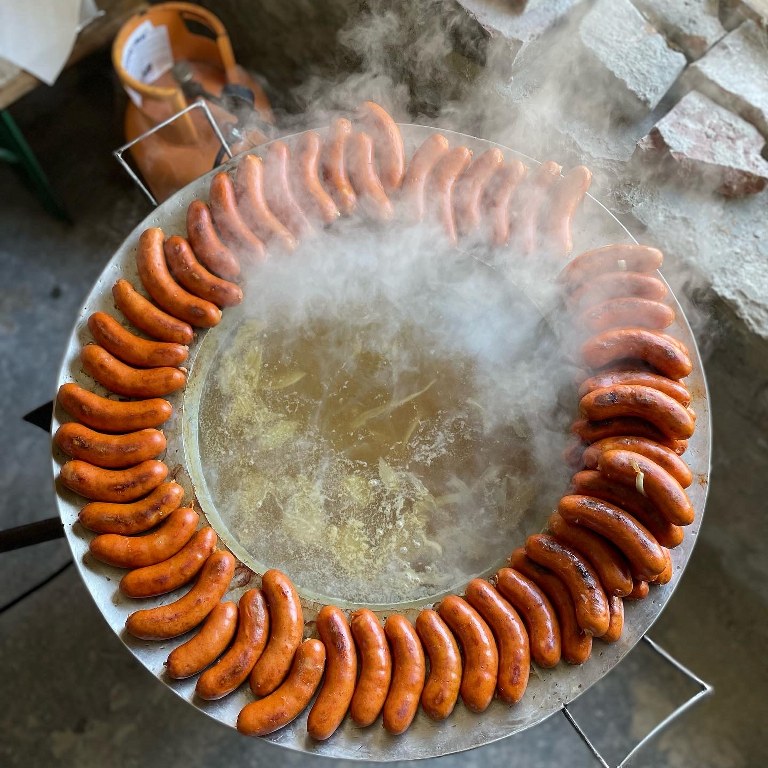
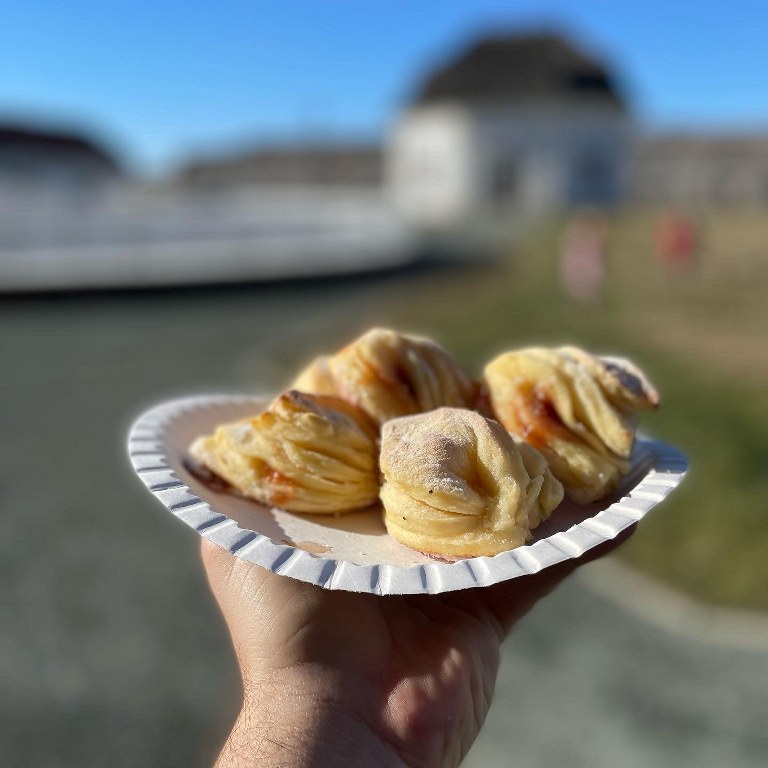
Eighteen years, our entire adulthood, we hang out, work hard, burn out, rejoice and grieve, and you have to experience it. The people of Brod bring you brandy, brew craft beers, sausages, peppers, and slice a ton of cured meat. A party that lasts eight hours, and you still have to be concise and precise enough, because it is very easy to break on the ice, I can tell you first hand," he added about the experience.
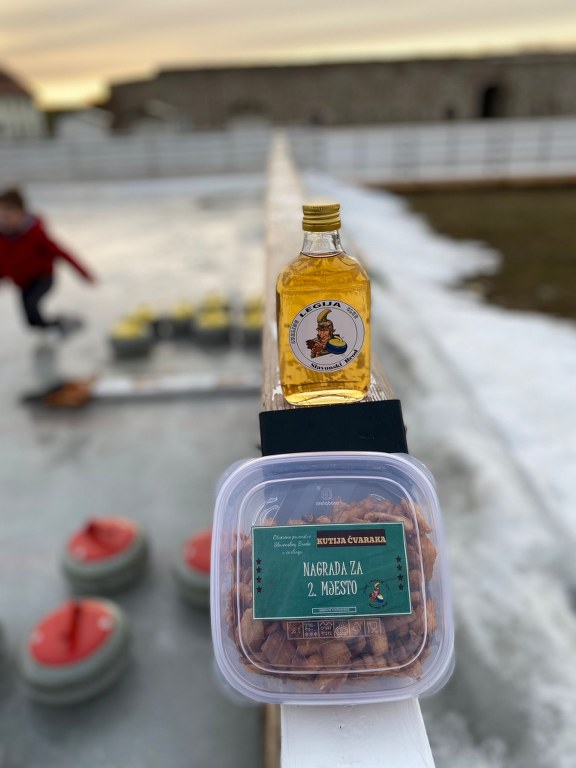
To read more about sport in Croatia, follow TCN’s dedicated page.
Croatia Winter Olympics Schedule: 11 Croatian Athletes Competing in Beijing
February 5, 2022 - A look at the Croatia Winter Olympics schedule as 11 Croatian Olympians compete in Beijing this February until February 20.
Croatia has a total of 11 representatives at this year's Winter Olympics, which are being held in Beijing from February 4 to 20, 2022, reports Gol.hr.
Four male athletes and seven female athletes will compete in four sports: alpine skiing, cross-country skiing, snowboarding, and speed skating.
Croatia's skiers in Beijing are Filip Zubčić, Matej Vidović, and Samuel Kolega, and female representatives Leona Popović, Zrinka Ljutić, and Andrea Komšić. Vedrana Malec, Tena Hadžić, and Marko Skender will represent Croatia in cross-country skiing. The only Croatian speed skater at the Winter Olympics will be Valentina Aščić, and the only snowboarder Lea Jugovac.
Schedule for Croatian athletes:
*all listed hours are according to Croatian time
February 5 (speed skating, qualifications in the 500 meters - Aščić)
12:00 race start
February 5 (snowboard, slope qualifications - Jugovac)
03:45 start of the competition
February 7 (women's giant slalom - Popović, Ljutić, Komšić)
3:15 first run
6:45 second run
February 8 (cross-country skiing, men, individual sprint - Skender)
9:00 race start
February 8 (cross-country skiing, women, individual sprint - Malec, Hadžić)
9:00 race start
February 9 (women's slalom - Popović, Ljutić, Komšić)
3:15 first run
6:45 second run
February 10 (cross-country skiing, men, 15 km classic - Skender)
8:00 race start
February 10 (cross-country skiing, women, 10 km classic - Malec, Hadžić)
8:00 race start
February 13 (men's slalom - Zubčić, Vidović, S. Kolega)
3:15 first run
6:45 second run
February 14 (cross-country skiing, men, 50 km freestyle - Skender)
7:00 race start
February 14 (snowboard, qualifications in big air - Jugovac)
2:30 start of the competition
February 16 (men's giant slalom - Zubčić, S. Kolega)
3:15 first run
6:45 second run
February 16 (cross-country skiing, women, team sprint - Malec, Hadžić)
10:00 race start
February 16 (speed skating, finals in 1500 meters - Aščić)
12:30 race start
February 20 (cross-country skiing, women, 30 km freestyle - Malec)
7:30 race start
Beijing is the first city to host the summer and winter editions in the history of the Games. About 2,900 athletes from about 90 countries will compete this month.
In the three Olympic zones - Beijing, Yanqing, and Zhangjiakou, there are 13 competition destinations, where 109 sets of medals will be distributed in seven sports branches consisting of fifteen sports and disciplines. The Beijing Winter Olympics is also the most balanced Winter Olympics to date (55% male and 45% female representatives).
To read more about sport in Croatia, follow TCN’s dedicated page.
New Novavax Nuvaxovid Vaccine to Become Available in Croatia
February the 5th, 2022 - A new vaccine against the novel coronavirus, Nuvaxovid made by the American company Novavax, will be made available here in Croatia by the end of this month.
As Poslovni Dnevnik writes, the fifth vaccine approved for use against the novel coronavirus, Nuvaxovid made by the American company Novavax, should arrive in Croatia by the end of February.
Prof. dr. sc. Mirjana Kujundzic Tiljak, the director of the Andrija Stampar School of Public Health at the Medical Faculty of the University of Zagreb, said on HTV on Thursday that this was a completely new vaccine.
''We know nothing about its effectiveness on new strains. We don't even know how long the protection will last. That's what is written in the official description of the medicine,'' said Kujundzic Tiljak as a guest of the Dobro jutro Hrvatska/Good morning Croatia show.
Given that the European Medicines Agency (EMA) approved Nuvaxovid back in December, as the first protein vaccine approved for use in the European Union, much is known about the vaccine itself. In addition to European Union countries, Israel has already ordered this new vaccine, ordering their first five million doses last week, even before the vaccine was officially approved in that country.
"This vaccine will be another alternative for those who cannot or don't want to receive the mRNA vaccines," the Israeli Health Ministry said. The same message was sent on Saturday by Irish Health Minister Stephen Donnelly, saying that Novavax's Nuvaxovid has proven ''highly effective'' in preventing moderate to severe clinical pictures of the disease. He therefore called on those few who haven't yet been vaccinated to do so when the first doses arrive in Ireland, as reported by tportal.
Back in September last year, based on an agreement between the European Commission and Novavax, Croatia ordered 198,000 doses of Nuvaxovid, and in early December, Dr. Dragan Primorac told RTL Direkt that the vaccine was ''extremely effective'' in relation to the new and rapidly spreading variant, Omicron.
Nuvaxovid is given in two doses three weeks apart. Unlike mRNA vaccines (Pfizer, Moderna), which use part of the novel coronavirus' genetic code, and vector vaccines (AstraZeneca, Johnson & Johnson) which use a harmless, genetically modified virus to transmit part of the coronavirus' DNA, protein vaccines contain fragments of a protein unique to the novel coronavirus. These fragments are enough for the body to respond by creating a natural defense against infection, and Novavax also uses insect cells in vaccine production.
The technology of protein vaccines is not new, on the contrary - vaccines against pertussis and hepatitis B have been developed on the same principle. Such a vaccine does not have to be stored at low temperatures, which is especially important for developing countries.
The results of two main clinical trials with more than 45,000 subjects showed that Nuvaxovid vaccines are safe and effective in the prevention of covid in persons aged 18 years and older. The first study, conducted in Mexico and the United States, showed a 90.4 percent reduction in the number of symptomatic cases of infection in people who received Nuvaxovid, seven days after their second dose. A second clinical trial, conducted in the United Kingdom, showed a vaccine effectiveness of 89.7 percent. It should be noted that these studies were conducted on ''old'' variants of the novel coronavirus, before the emergence of Omicron, but Novavax has meanwhile reported that their vaccine also generates an immune response to the Omicron variant.
The most common side effects were mild to moderate and went away in a few days. They included pain and tenderness at the vaccine site, fatigue, muscle aches, headache, general weakness, joint pain, and nausea or vomiting.
Nuvaxovid is a protein vaccine with a laboratory-grown version of the spike protein present on the surface of the SARS-CoV-2 virus. The vaccine also contains an ''adjuvant'', a substance that helps boost the immune response to the vaccine, HALMED said.
When the vaccine is given, a person's immune system will identify the protein as foreign and will create a natural defense against it, ie antibodies and T-cells. In case of genuine coronavirus infection, the immune system will then quickly recognise the spike protein on the virus as being the same and be ready to attack it. Antibodies and immune cells work together to kill the virus, prevent it from entering the body's cells, and destroy those already infected cells, helping to protect against full coronavirus infection.
Below are the EMA's answers to a few additional questions about this new American vaccine.
Can people who have already recovered from covid be vaccinated with Nuvaxovid?
There were no additional adverse reactions in subjects receiving Nuvaxovid in clinical trials who had previously had a coronavirus infection. There was insufficient data from the study to conclude how well Nuvaxovid works in people who have already had the virus.
Can pregnant and breastfeeding women be vaccinated with Nuvaxovid?
Animal studies do not indicate any harmful effects in pregnancy, however, data on the use of Nuvaxovid during pregnancy remains limited. Although there are no studies on breastfeeding, no risk is expected. The decision to use the vaccine in pregnant women should be made in close consultation with a healthcare professional after considering the benefits and risks.
Can children be vaccinated with Nuvaxovid?
Nuvaxovid is not currently recommended for people under 18 years of age. The EMA has agreed with Novavax on a plan for later testing of the vaccine in children.
For all you need to know about coronavirus specific to Croatia, make sure to bookmark our dedicated section and select your preferred language if it isn't English.
Could Low Croatian Vaccination Rate Result in Poor Summer Season?
February the 5th, 2022 - Could the continuing low Croatian vaccination rate against the novel coronavirus have a negative effect on this summer's tourist season? As would-be visitors keep their eyes on what's going on in relation to the pandemic in a particular desired holiday destination, some believe so.
As Poslovni Dnevnik writes, the Council for the Recovery and Development of Tourism, which brings together representatives of the most important segments of this most important Croatian industry, has warns that Croatia is so far behind its typical Mediterranean competition in terms of vaccination that it could be well and truly beaten this summer having made a rod for its own back.
The new Croatian vaccination rate (an updated version of the situation) will be published on the new ECDC maps, not only the number of people infected with covid at any given time. It's worth noting that Croatia is currently a worrying dark red colour and is likely to stay that way until further notice, writes N1.
There are still tourists in Croatia and planning to come to Croatia, despite the situation caused by Omicron which is causing high numbers in terms of infection rates almost everywhere. In Opatija in Kvarner, they have claimed that they haven't had such a good January since the beginning of the century, and they are also busy arranging things for the summer months.
"Well, last year's results were certainly at a high level, which is fantastic. Of course, the situation will not be the same this year. We hope that the situation with the epidemic will calm down, so we're expecting some better results,'' pointed out Van Sarajlic, a local hotel manager.
It all depends on the virus, and our response to it.
"Foreign guests are monitoring the situation in the country. We constantly inform them about the situation, we work intensively with the tourism industry to keep hold of the stay safe in Croatia label, and hygiene and all other measures in our facilities are at the highest level because guests follow what's going on here, they know. That's why they came to us last year, so we have to attract them again this year,'' said Rena Persic Zivadinov, the director of the Kvarner Tourist Board.
That is why the High Council for the Recovery and Development of Tourism is sitting in the City of Zagreb. While Kvarner is an example with 75 percent of their resident adult population fully vaccinated, the rest of the country lags far behind.
That is why the Minister of Tourism and Sport, Nikolina Brnjac, has duly warned:
"We all know that Croatia's competing countries are making a come back. We also showed a presentation of the vaccination coverage across the Mediterranean, and it is much higher than it is in Croatia. Last year, we launched the priority vaccination of employees workin in the tourism sector which had an extremely good response, over 70 percent of employees came and got vaccinated. And this time, I'm calling on the entire tourism sector to remain responsible.''
The sector is generally concerned about the low Croatian vaccination rate, as everyone is doing better than Croatia is, across the rest of the Mediterranean, but also in the emitting markets, including the United States.
"I'm afraid that everything we did last year and all of the effort we put in will end up being worth next to nothing, I'm afraid that this year, with this situation we're in today, we're once again at point zero from which we have to start building everything back up from scratch,'' said the president of the Association of Hoteliers at the Croatian Chamber of Commerce, Josipa Jutt Ferlan.
Tomislav Fain, President of the Association of Croatian Travel Agencies, also noted:
"We all know what will happen to Croatian tourism if by any chance we remain dark red or red. If the German Government or the Austrian Hovernment only gives a suggestion to its citizens not to travel to such destinations, it would significantly affect our tourism, it would significantly affect the numbers we get, and the financial structure of everything.''
For more, check out our travel section.
For all you need to know about coronavirus specific to Croatia, make sure to bookmark our dedicated section and select your preferred language if it isn't English.
Pozega Company Plamen Rewards Employees for Getting Vaccinated
February the 5th, 2022 - The Pozega company Plamen has recorded some extremely encouraging results, mostly related to exports, despite these continually challenging times. More controversially, it decided to reward its employees for getting vaccinated against the novel coronavirus by providing monetary bonuses.
As Poslovni Dnevnik writes, according to the company's procurator Vinko Matijevic, the Pozega company Plamen generated a massive 280.6 million kuna in revenue last year, which is an increase of as much as 67 percent when compared to the previous year. Net profit amounted to 49 million kuna and was 70 percent higher, Radio Vallis Aurea wrote on Thursday.
Exports amounted to an impressive 246.7 million kuna and increased by 72 percent. The number of workers increased by a fifth during the year, or about 70 more than the previous year. Today, about 420 people work for Plamen. But that's not all: the average net income is around 8,200 kuna per month, which is a growth of 15 percent, and the minimum monthly wage provided by this company is 6,542 kuna.
It's worth noting that the Pozega company Plamen is a highly successful and well established company that exports almost 90 percent of its cast iron products, and is also known for its fireplaces, stoves and other metal products used for similar purposes, reports Danica.
The Pozega-based company recently came into the public spotlight after the director invited all of its unvaccinated workers to apply for vaccination against the novel coronavirus, as well as for those who need to receive a third dose to do the same. If they do so and get vaccinated or boosted, they receive about 340 kuna net on their January salaries.
If they don't get vaccinated, as of February the 1st this year, they will no longer receive salary incentives in the amount of 400 kuna gross per month, nor will they be included in the distribution of the company's issuance of a 13th salary. In addition to that, unvaccinated Plamen employees will not be able to perform managerial functions within the company, the director wrote on the company's bulletin board. It is not known if his call met with a response from workers.
For more, check out our business section.
Replenishment of Croatian Aircash Wallet Via Paysafe Available in 20 Countries
February the 5th, 2022 - The replenishment of the Croatian Aircash wallet via the Paysafe platform is now available in twenty different countries, but ironically NOT here in Croatia, where the Aircash app was created and developed.
As Poslovni Dnevnik/Ivan Tominac writes, the Croatian fintech Aircash and the multinational online payment platform Paysafe have concluded a cooperation that allows Aircash wallet users to top up their wallets directly with cash in more than twenty countries across Europe, from Austria to Sweden.
When they want to add cash to their account, Croatian Aircash wallet users choose the "cash" option as a top-up method. This generates a barcode that can be taken to a nearby Paysafecash payment site to fully complete the transaction.
As Udo Müller, the CEO of Paysafe's eCash department, explained, the partnership between the Croatian Aircash application (app) and the Paysafe platform gets to the very heart of the problems faced by very many migrant communities. This approach allows people to digitise their money and transfer it much more easily, which helps them support their families back at home.
“This is especially useful for those who live abroad and who want to send money to friends and family at home. By enabling them to top up their accounts with cash through a reliable solution such as Paysafecash with a wide network of payment points, we make this service more accessible to our customers,'' said Hrvoje Cosic, President of the AirCash Management Board.
Although the Republic of Croatia is currently not among the countries covered by the cooperation, the international Paysafe survey from 2020 shows the state of awareness regarding cash. As many as 50 percent of respondents still believe that cash is the most reliable form of payment in a crisis, and 72 percent said they would be worried if they could not access cash.
For more, check out our dedicated business section.
‘The Cathedral Isn’t Ugly’: Impressions of Croatia in Travel Journals of Yore (I)
February 4, 2022 - Long before the dawn of tourism, pilgrims, artists, scholars and adventurers of all kinds made their way down the Croatian coast. Many foreign travellers recorded their impressions along the way, leaving behind a treasure trove of travel journals for us modern folk to peruse and enjoy just how much some of the writings resemble online reviews of the present day. Exploring the predecessors of Trip Advisor, starting with a few thoughts on Istria
Most of us can’t help but love travel content. In the present age, especially since a certain issue made it quite difficult to travel, we explore the world through Facebook posts, Instagram stories and travel blogs.
It’s only a modern take on a very old phenomenon: travel journals, a fairly popular form of literature in which travellers recorded their impressions of all the places they visited.
The Croatian coast played a major role in travel literature from the 15th century onwards. The powerful status of Venice and its location on the Adriatic made it a focal point of every itinerary; travellers either embarked from Venice or passed through it on their way southeast. As Venice ruled the Croatian coast until the end of the 18th century, its major cities such as Zadar or Trogir were essentially must-visit destinations for every person that travelled by sea.
Some were pilgrims on their way to the Holy Land, some were artists capturing breathtaking landscapes and grand classical monuments. Most travel journals include detailed descriptions of the places visited, their geographic position and historical background, architectural landmarks of special importance…
…and food, and wine, and women. It’s Croatia, after all, and while it doesn’t come as a surprise, it’s delightful to read about someone fawning over olive oil or the beauty of Dalmatian women centuries ago.
Back in college, I studied quite a few such journals for a paper on architecture, and I recall having a laugh every time a 17th century 'tourist' opted to ignore the landmarks and mused where to buy wine instead. Detrimental to my paper, but quite fun to read - and having a different outlet now, perhaps it’s time to bring those moments to light as well. After all, travellers in history weren't that different to us today: they took in the sights, sampled the local cuisine and took interest in locals and their customs. And of course, followed it all with colourful commentary.
***
We’re starting our trip in Istria, retracing the steps of French archaeologist Jacob Spon, who stopped in Rovinj on his way from Italy to Greece in 1675:
Rovinj is a small town (...) where the land is rich in vines and olive trees. The wine is good, and I believe that to be the reason why you see so many lame people around, because strong wine is the father and the fosterer of gout and sciatica. The women wear hoop skirts in Spanish fashion which make them look appalling.
Says this man:

Looks thorougly unimpressed - alright.
On to Pula, where Spon maintains the same level of snark:
At present it has seven or eight hundred inhabitants at most, and if it weren’t for the remnants of its ancient grandeur, no one would believe this used to be a Republic, as I learned from an inscription carved into the base of a statue of emperor Severus, where it’s referred to as Respublica Polensis.
To be fair, I can see where Spon is coming from, as Pula wasn’t exactly a lively town in the 17th century. After the fall of the Western Roman Empire, the city gradually sank into ruin, ravaged by one attacking force after another, as well as several deadly diseases that decimated the population. It was only in the 19th century when Austria took hold of Pula that the city finally began to thrive after centuries of neglect.
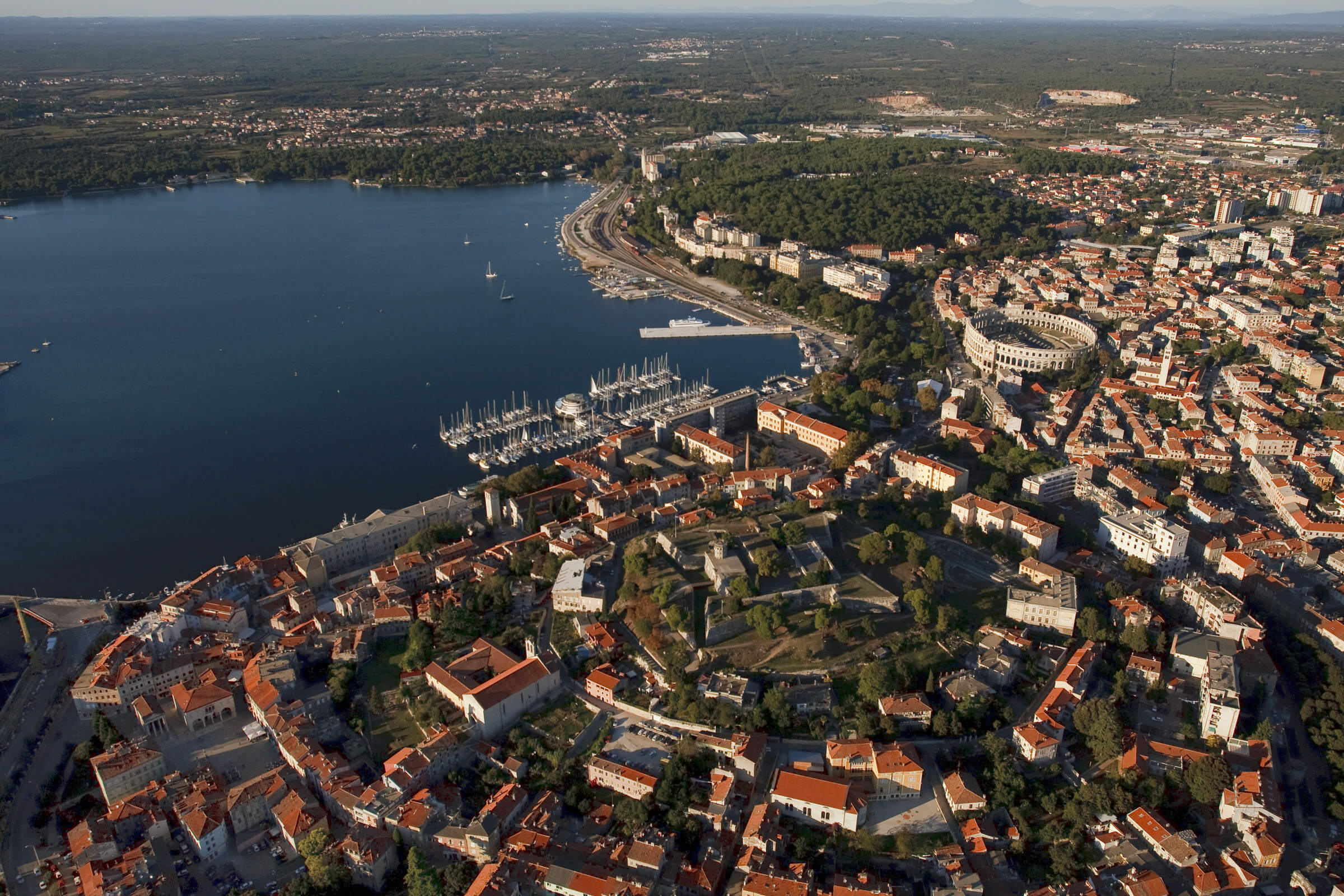 Pula by Romulic and Stojcic
Pula by Romulic and Stojcic
But I’m getting ahead of myself; first, another visitor in the 1770s, a friar named Noé Bianchi who made a stop in Pula on his pilgrimage to Jerusalem. Much friendlier than Spon, he records a short yet favourable impression of the Istrian city:
It was a very noble and royal city in the past; in it resided an Emperor of Rome who had a beautiful castle built, which is now ruined but a piece of it is still visible, and some beautiful tombs still remain, sculpted in very good marble. Here we stayed for four days waiting for calm seas and good wind, then we left for our voyage and arrived in Zadar.
Slightly reminiscent of a third grader recounting his summer adventures for a back-to-school assignment. I’m a bit unclear on whether Bianchi simply referred to the amphitheatre in Pula as a castle/fort, or if he failed to notice the gigantic edifice at all in the four days he spent in town. Perhaps the latter, as we don’t see the arena in this little tableau he made:
Giuseppe Marcotti didn't make the same faux pas upon his visit to Pula in the late 19th century. A prolific Italian writer and journalist, Marcotti gives an account of the Croatian coast in his work ‘The Eastern Adriatic: From Venice to Corfu’ that is so incredibly detailed, it reads more as a modern travel guide. It’s complete with train schedules and prices, lists of hotels and, most importantly, restaurant recommendations.
At the time of his visit, Pula was thriving under Austro-Hungarian rule as their main naval base. Marcotti notes the city is teeming with armed forces, but points to something else as Pula’s most captivating feature:
…despite the imposing ensemble of armoured towers, forts, batteries, embankments, barracks, gunpowder magazines, warehouses, factories, artillery and ammunition depots, and bays full of warships; in spite of the arsenal, all the armament and military equipment, the monuments to Roman grandeur in Pula are so remarkable, it’s them that attract the traveller’s attention above all else.
Poetic - love it.
Marcotti provides a comprehensive account of every nook and cranny from Umag to Dubrovnik, including some towns and villages not often visited in his time.
Novigrad, for example, apparently wasn’t as pretty of a sight as it is today:
Poverty and decadence are the essence of this place: carved stone and Roman tombstones were used to build small rustic houses; medieval fortifications were adapted into petty dwellings. (...) These days, the quiet port only serves as refuge from bad weather, and people only work at the stone quarries.
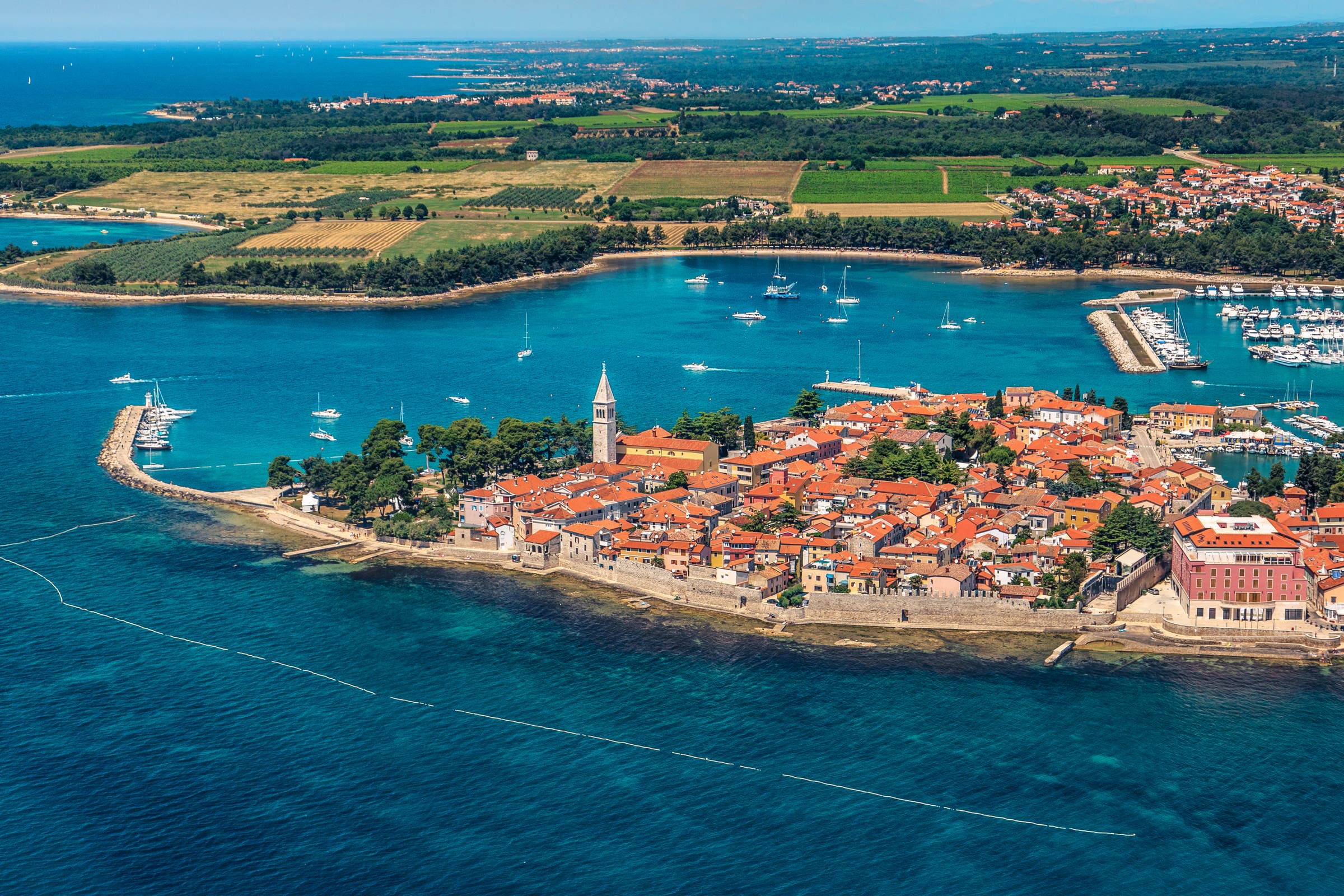 Novigrad by Romulic and Stojcic
Novigrad by Romulic and Stojcic
Let’s see what he thinks about a couple of other places in Istria - see if you can spot a common denominator in some of his impressions:
Rovinj - The labyrinth of alleys leading to the cathedral, snaking between humble houses bristled with colossal, bizarre chimneys like those in Venice, is abuzz with an energetic, fiery population which always gave the best among excellent Istrian sailors. The women appear to be a refined group of brunettes in the Venetian type; they speak, look, dress and walk as they do in Venice, typically wrapped in black scarves: their dialect is not without some Neapolitan inflection.
Vodnjan - The women inspire admiration, their distinctive beauty being that of the Latin type, with elegant limbs, well-shod and well-dressed and well-coiffed in their special attire, in many ways similar to the famous Arlesiennes of Provence - and also deserving of attention are the wedding customs, religious processions, dances and other popular festivities.
What about the men, Marcotti? We'll never know.

Marcotti also warns you’ll have some trouble with logistics if you have your heart set on island hopping:
If you wish to visit the islands as well as the most interesting places on the mainland, you should keep it in mind that, despite the numerous steam liners of the Lloyd and the Hungarian-Croatian Society, the services are not so scheduled that you could avoid wasting a week. For this reason, and to make your stay more comfortable, it is more practical to go to Rijeka with a direct steamer from Pula (or by rail from Trieste), and then take various trips from Rijeka to visit places on the coast of Istria, Kvarner, Croatia and the islands that are discussed in this guide.
**
And finally, Pag, an island known for many things: its cheese, lamb, salt, lace, and the otherworldly landscape that is said to resemble the surface of the Moon. Although Pag isn’t part of Istria and Kvarner, we'll cheat a bit as it's a good point between the Northern Adriatic and Dalmatia to end this piece with.
A lengthy description of Pag comes from Alberto Fortis, an 18th-century Venetian monk, writer and cartographer who travelled in Dalmatia and recorded his impressions in a series of letters to his esteemed acquaintances, published in the 1770s as a work titled 'A Journey to Dalmatia' (Viaggio in Dalmazia).
 Pag by Romulic and Stojcic
Pag by Romulic and Stojcic
Fortis was a meticulous observer and his writing detailed and extensive; as such, his letters are a phenomenal source for anyone interested in the history of Dalmatia. He gives a comprehensive account of Pag’s history, demographics, climate, economy, culture and so forth; the bulk of it is level-headed and mostly neutral, but towards the end, Fortis brings down the hammer, leaving only scorched Earth in his wake:
People’s conduct on Pag is quite uncivilised, and superstition reigns among them. (...) I haven’t found a single medallion, inscription, manuscript, nor a single sensible man in this entire town; they’re all interested in salt harvesting and whoever doesn’t talk about salt is given little regard.
They say the island’s been abandoned on several occasions, and truly, one should sooner be amazed it’s inhabited in the first place, as the lucrative salt factories are the sole thing that could inspire people to live in such a joyless place.
Ouch.
He goes on, this time in more detail:
Owing to difficulties that arise on the journey to Pag town and inadequate accommodation that foreigners come across, this place is very poorly visited. Thus its inhabitants are brutish and rude, as if they lived at the farthest possible distance from the sea and didn’t trade with decent folk. Noblemen who are under the impression they carry themselves differently than the common folk are truly laughable characters, with their attire and habits and insulting boasting. The clergy’s ignorance is unbelievable; a priest of the highest rank, believed to be a learned man, didn’t know the Latin name for Pag.
Fortis continues to fire on all cylinders, next turning his attention to folk beliefs in a criticism heavily underlined with contempt for the local clergy. Keeping in mind he was a clergyman himself, this was very 18th-century-enlightenment of him:
The majority of Pag’s population makes a living from sea salt harvesting and is paid well by the Government, which is why dry summers are of great importance to the town’s inhabitants, so much so that the uneducated folk believe the rain to be a pestilence brought upon their land by some sorcery. In line with this belief, they choose a friar to drive away the evil spirits and turn the rain away from the island. If, in spite of the poor friar’s efforts, the summer turns out to be rainy, he loses his reputation and his living; but if two or three summers in succession just so happen to be dry, the friar earns considerable respect and benefit.
 Pag by Romulic and Stojcic
Pag by Romulic and Stojcic
In Novalja, where they deal in something different to salt harvesting, they employ equally ridiculous means to summon rain as their neighbours do in trying to keep the weather dry. There’s no end to superstitious beliefs among those poor uncivilised island folk, beliefs that are mostly encouraged and supported by friars for their own gain, and sometimes for a more nefarious purpose, but since not much good can be accomplished by bringing up folk nonsense or the wickedness of the clergy, I will leave them in peace such as they are.
1/10, would not recommend? This would be a tough act to follow, so we’ll leave it at that, much like Fortis left the Pag folk in peace… after shredding them to bits.
Next up: Dalmatia! We’re heading to Zadar, Trogir, Split and a few southern islands to see what the travellers of yore thought about some of the most popular tourist destinations in Croatia in the present day.
Sources for Part I:
Jacob Spon, Voyage de l'Italie, de Dalmatie, de Grece, et du Levant, Fait és années 1675. & 1676., Tome I (Antoine Cellier le fils, Lyon, 1678)
Noé Bianchi, Viaggio da Venezia al S. sepolcro, et al monte Sinai (Remondini, Bassano, 1770)
Giuseppe Marcotti, L’Adriatico Orientale, da Venezia a Corfu (1899)
Alberto Fortis, Put po Dalmaciji (Globus, Zagreb, 1984)
Quotes translated from Croatian, Italian and French by the author of the article.


